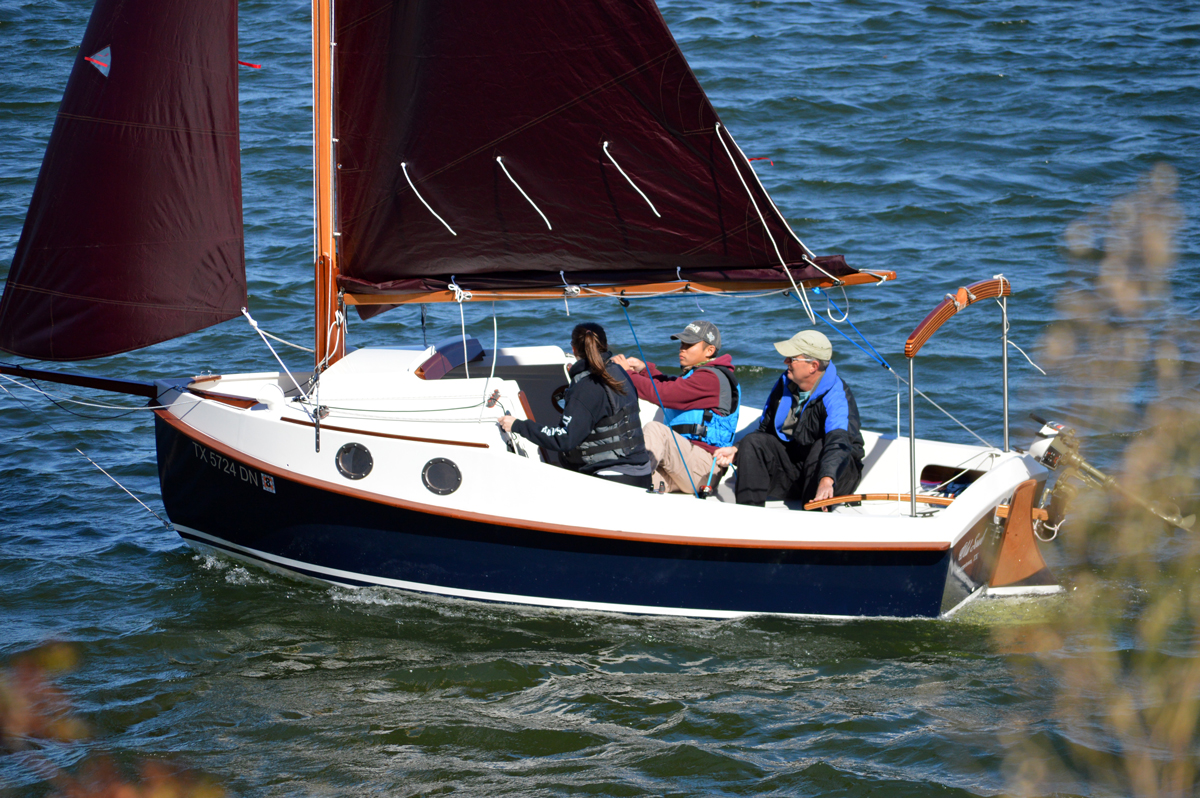I have not been able to work on the boat much lately--warm weather coming in so more outdoor jobs to do, etc., etc. Did manage to get the panels that were wired in "tack-welded," CLC's term for putting strips of epoxy glue between the wire stitches.
 |
| Tacking Side Panel to Lower Panel |
The floor joists have been glued also. Gaps were left for the stitching wires so they can be removed later. I am using a caulking-gun cartridge that contains, in this case, Six10 thickened epoxy. There are two chambers in the cartridge, one for resin and one for hardener. They are mixed together in what is called a static mixer on the tip of the cartridge. Six10 is a West System product. I started with a similar MAS Epoxies product called Gluzilla. I like Gluzilla a lot, but it's pretty new and the only vendor I can find is CLC--needed the glue in a hurry and CLC is very slow to ship, so ordered Six10 from Jamestown Distributors and got it in three days. It seems to work about as well, but Gluzilla is better at not sagging. I'll be glad when it is more generally available.
In the manual, modified plastic bags similar to pastry bags are used to apply the thickened epoxy. I used the cartridges because to use the bags when gluing the floor joists you have to climb in the boat very carefully and balance on the keelson. Alright for younger folks, but I just don't have the agility to do that without half killing myself. So I used the cartridge method, even though it is a lot more expensive.
I was having a great deal of trouble trying to get the lower panels to meet up with the side panels at the bow end, i.e., there was a gap of up to 1/4" between the bow and the first bulkhead. Luckily, this same problem was asked about on the PocketShip Forum at about the same time, and that is where I learned how to fix it.
 | |
| Clamps Used to Draw Panels Together |
Also, the construction manual doesn't say anything about it, but several pictures show support under the rear end of the keel. As you may remember I put the building cradle on casters, so I had to do the same for the keel support. Here's how I solved that problem:
 |
| Keel Support |

Looking good!
ReplyDelete